How to Organize Low Kitchen Cabinets — 6 Ways To Sort Hard-to-Reach Storage That Make So Much Sense
Your low, closed storage doesn't have to be unapproachable if you know how to keep it organized. Here's an easy guide
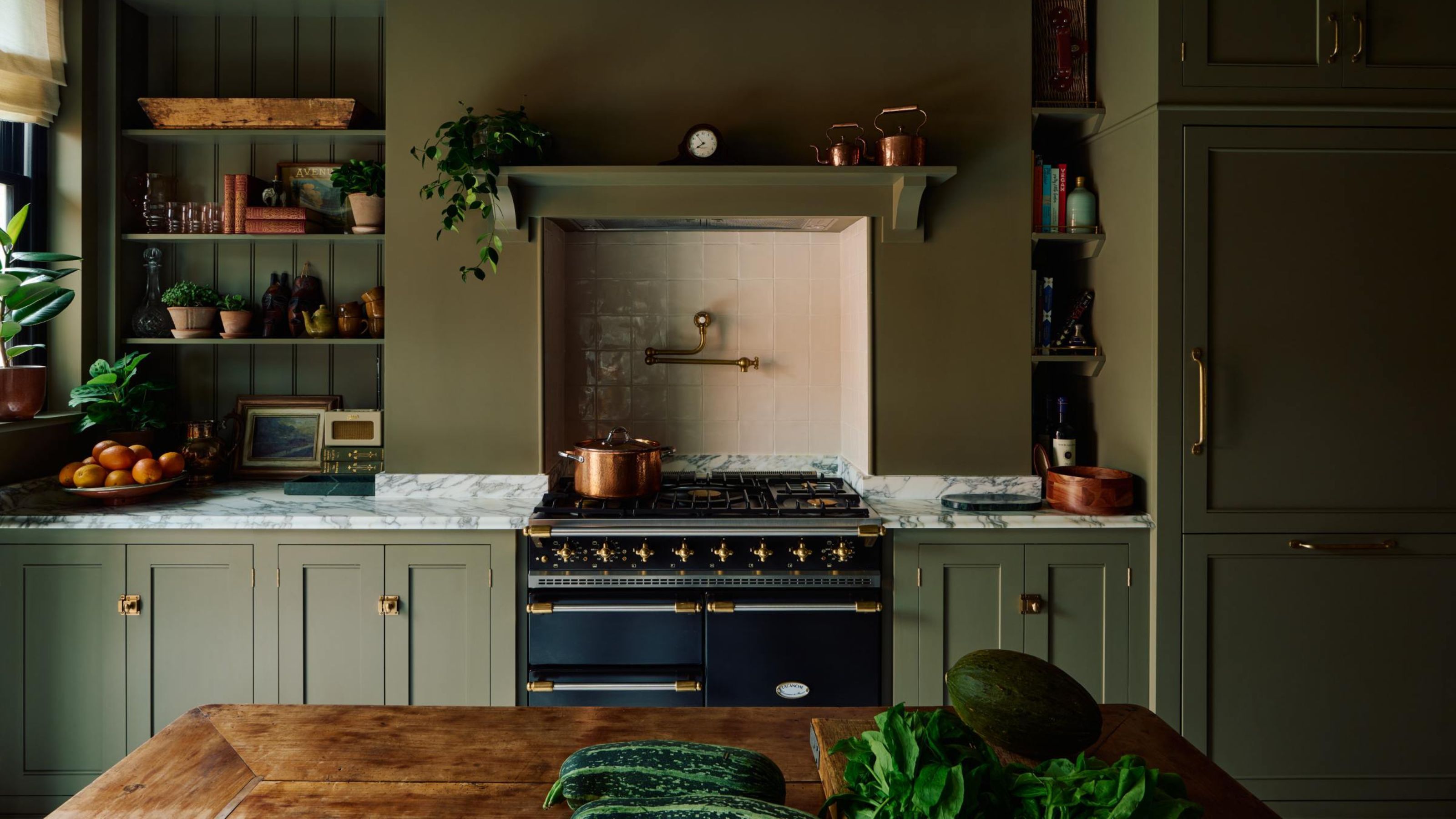

Lower kitchen cabinets can be both a blessing and a curse. They're ideal for organizing household items into categories, with one cupboard holding plates and stemware and another keeping your mug collection at bay. However, in most cases, this neat system may not last as long as you want it to.
Learning how to organize a kitchen in a way that actually helps maintain its style and aesthetic can be challenging. Organizing lower kitchen cabinets is no easy feat, which is why finding the right solution to maintain order is a must.
To help remedy the feelings of disarray taking over your kitchen cabinets, I asked professional organizers for their top organizational tips tailored specifically toward lower kitchen cabinets. Even if your cabinets are on the smaller side, these tricks will elevate their functionality tenfold. Here's what the experts had to say about it.
1. Organize Your Low Cabinets by Category
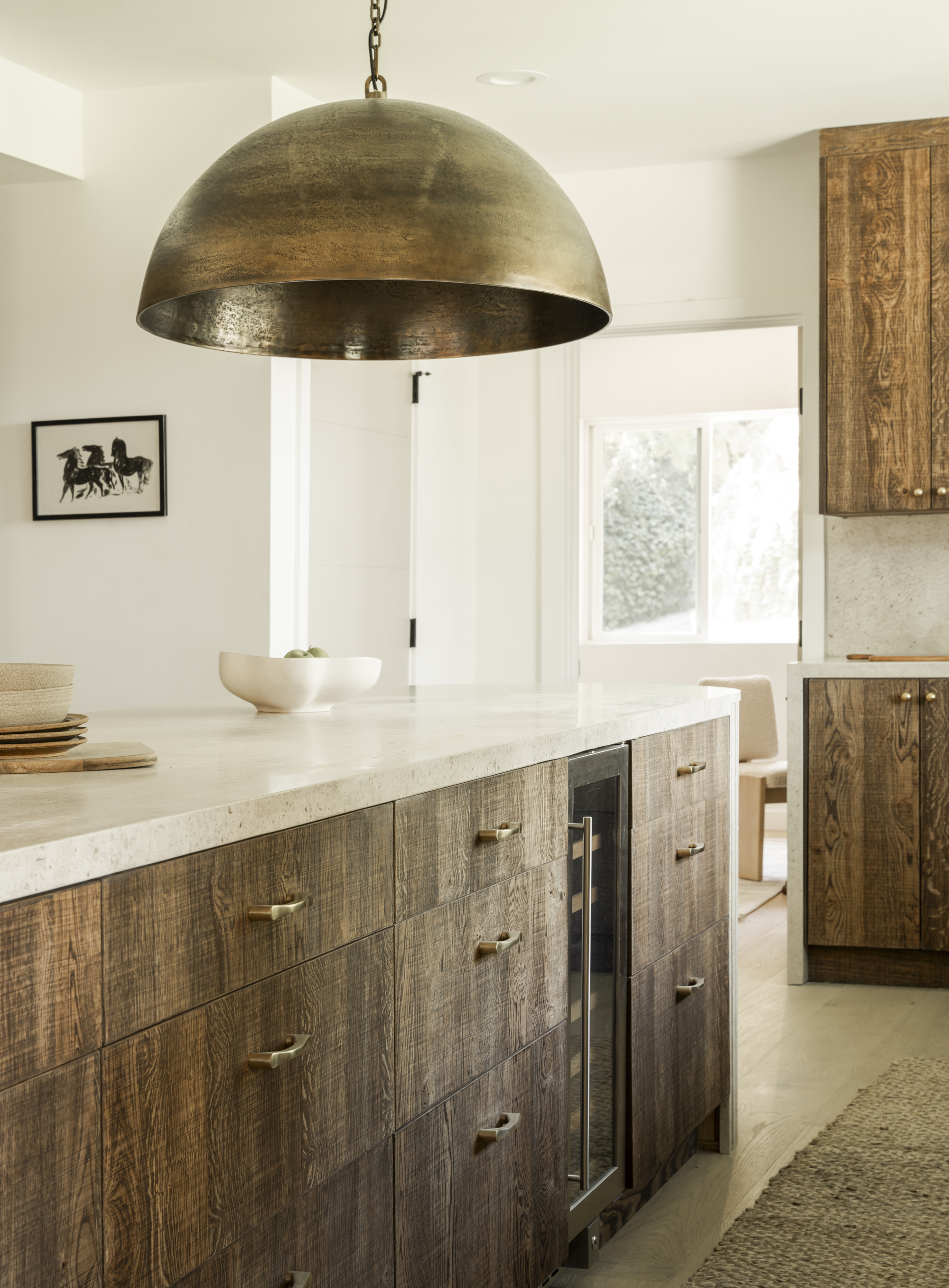
If your lower kitchen cabinets contain anything and everything that will fit in the space, they will quickly become tiresome to use. You'll dread opening them, and you'll probably just end up spending precious time digging for what you need — only to find out it isn't where you thought it would be.
If you learn where to put things in kitchen cabinets and drawers by adding categories to your low kitchen cabinets, also known as "zoning," your kitchen, you won't have to face this scramble again.
Ben Soreff, a professional organizer at House to Home Organizing, says, "Every item in your kitchen belongs to a specific category like baking, cooking, entertaining, every day, utility, food, snacks, and decor. Sorting your items into categories like these and then dedicating an entire cabinet or cabinet shelf to each will make everything easy to find."
2. Store Items Where They Make Sense
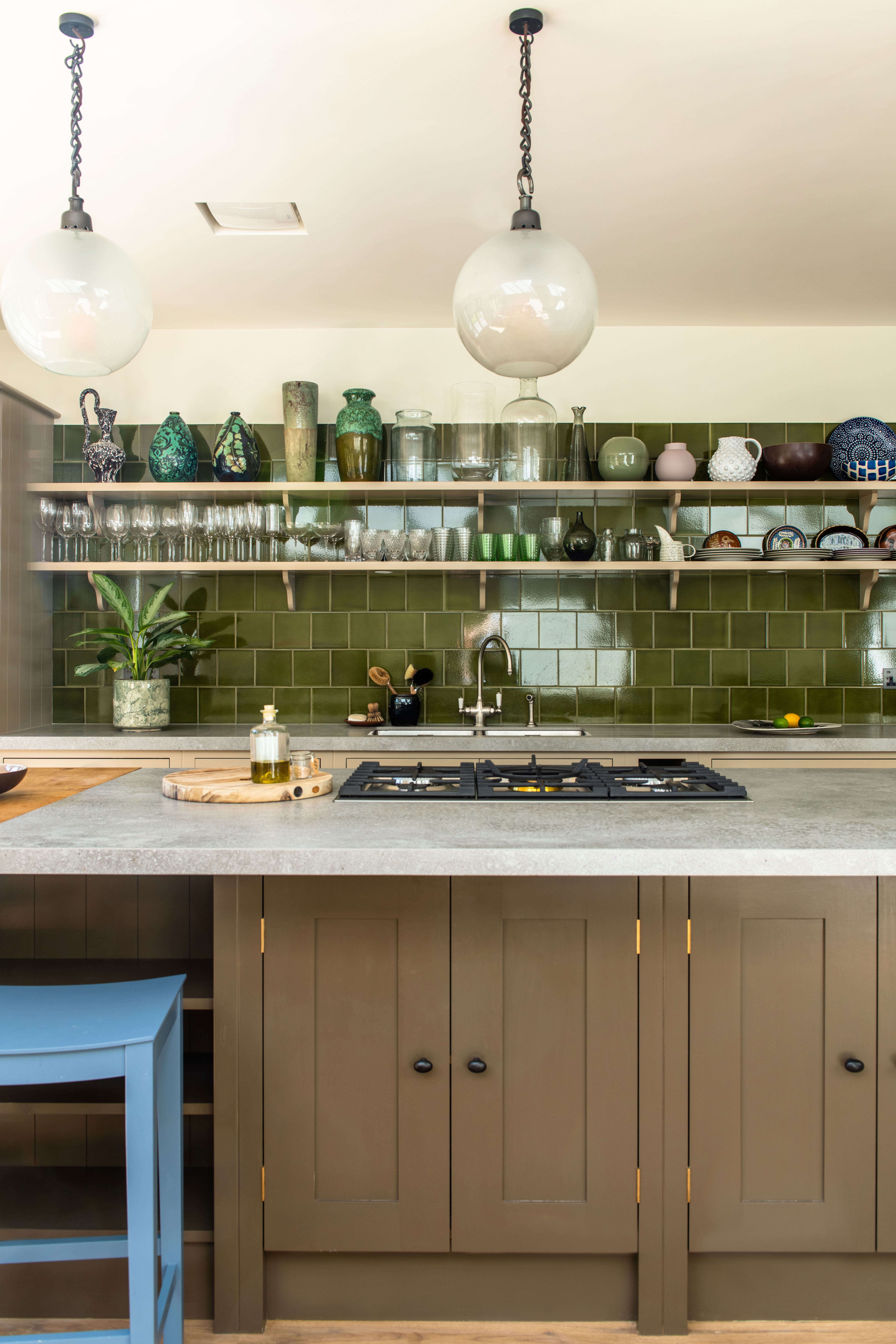
After removing all of your items from their current cabinet space and creating categories, Ben suggests taking the time to designate each cabinet location in a way that makes sense in the long run. "For instance, I believe the cabinets near the sink are a prime location for frequently used items such as everyday plates and glasses," says Ben. "If the dishwasher is also nearby then everyday plates and bowls should live close by for easy putting away. Additionally, if you enjoy coffee or tea then mugs and reusable bottles should live near your coffee maker and kettle."
The Livingetc newsletters are your inside source for what’s shaping interiors now - and what’s next. Discover trend forecasts, smart style ideas, and curated shopping inspiration that brings design to life. Subscribe today and stay ahead of the curve.
If your kitchen lacks a sense of order, you could organize your space by sticking post-it notes with labels on your cabinet doors. It's hard to organize your kitchen in a day, but eventually, your mind will subconsciously get used to where everything is, and when it does, you can remove the notes and labels. This method is also great for teaching kids where to put items away in cabinets that are low enough for them to reach.
The Post-it® 100% Recycled Paper Super Sticky Notes Wanderlust Pastels 5 Pads from Target is a good option for this as it comes with many colors you can use to make different areas stand out super clearly in your brain. However, if you'd prefer something brighter, you could try using Target's Post-it® Super Sticky Notes, which adhere well to most surfaces.

Ben Soreff is a partner of House to Home Organizing. He is originally from Portland, Maine and used to work in film & TV Production. Ben graduated from Skidmore College and has experience with Level 5 Hoarders.
3. Put Items Where They Belong, Not Where They Fit
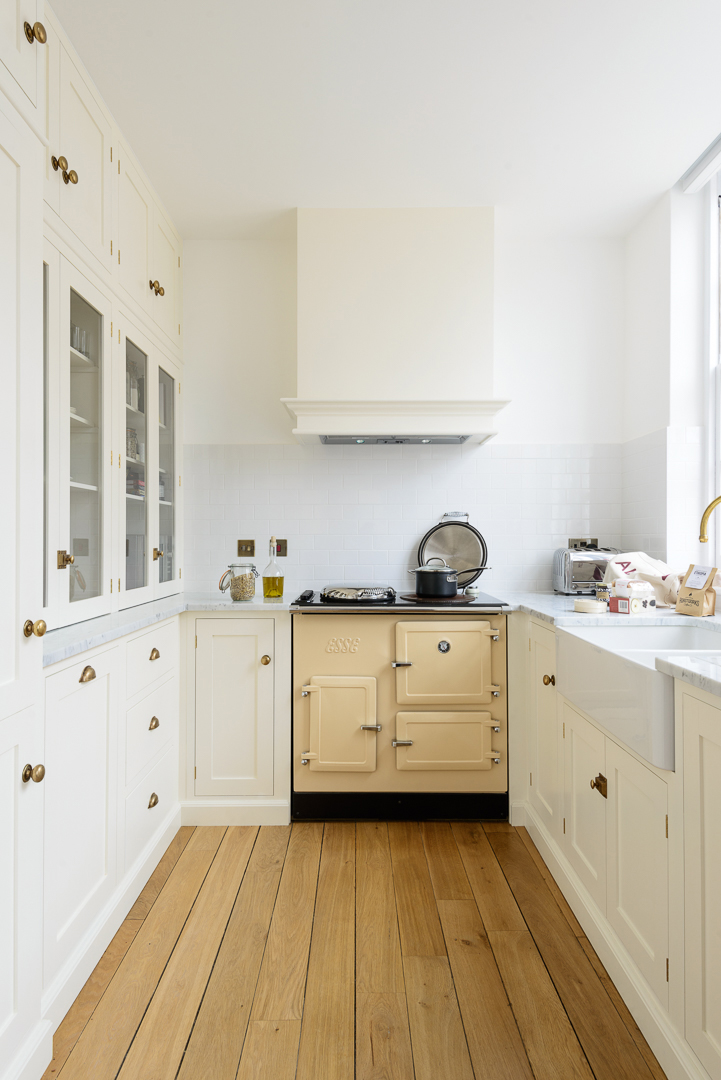
If you have a small kitchen, it can be tempting to cram as much as possible into your lower cabinets to make storage work harder. However, as much as doing this may bring relief at the moment, you're only shifting your source of stress. "We want to put items where they belong not where they fit. Cramming every dish, bowl, and cup in a cabinet is very easy (it's called shoving), but getting them out again is a real nightmare," says Ben.
For instance, let's talk about plates and organizing dishes in a kitchen. If you have too many plates to fit into your plate cabinet or onto your plate shelf, it's likely a sign of two things: your plates aren't sitting in the space in a very efficient way, or you have too many plates for the area.
If you have too many plates for the area, stop and ask yourself whether you need every plate you have. If you believe you do, consider moving your plate shelf to a different cabinet space in your kitchen or storing lesser-used plates elsewhere. And if your plates were crammed into the space without being stacked and sorted, now's the time to sort it out. Place large plates together in a stack, followed by smaller ones, making a stable plate tower that maximizes your kitchen cabinet's vertical storage.
If you're not a fan of stacking items like plates and still fear dropping them when reaching for specific pieces, we recommend using an item like the Simple Houseware Stainless Steel Plate Drying Rack rom Amazon. This way, your plates will be neatly organized in a space-saving manner.
4. Organize Your Cabinets With Your Future Self in Mind
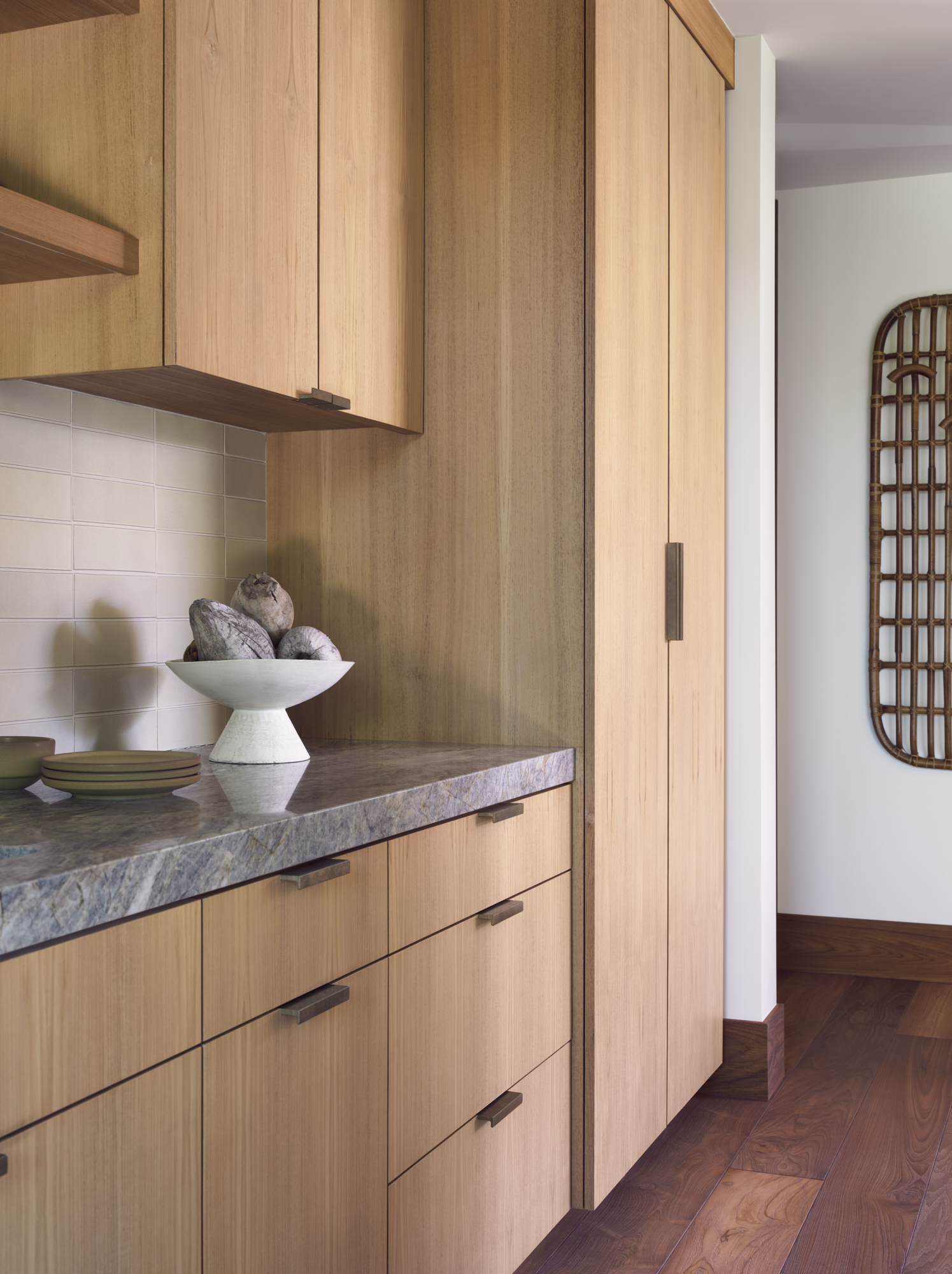
One of the biggest mistakes people make when it comes to putting items away in their lower kitchen cabinets is not thinking about how a messy cabinet can affect you in the future. Kimberly Corey, certified professional organizer, certified virtual organizing professional, and owner of Finely Sorted Organizing, LLC, says, "At Finely Sorted Organizing, we rely on the SPACE method by Julie Morgenstern to ensure the likes of cabinets remain sorted in a uniform way that's easy to maintain throughout the week: Sort, Purge, Assign, Contain, Equalize in that order, always."
By finding a routine or system to follow and remaining strict with it, your cabinets will remain organized, whether large or small. For those low-to-no-energy days when all you want to do is toss anything everywhere and head to bed, it's handy to have a "sort later" basket in the corner of your kitchen countertop. This basket will essentially be where you put anything you haven't yet returned to its proper home. Having a basket for these items allows you to rest with less guilt, as your items will still return to the right place, even if it's not right away,. This allows you to focus on prioritizing rest.
Just make sure to remember to empty the basket once it's full, perhaps as a part of your Sunday reset checklist if not sooner.
FSO was founded in 2000 by Kim Corey, CPO®, CVOP and provides mindful, fun, virtual home organizing to those seeking better productivity and visual relief in their home and work environments. We help ease the anxiety of feeling frozen and immobilized by the things around you.
5. Work With the Shape of Your Kitchen Cabinet
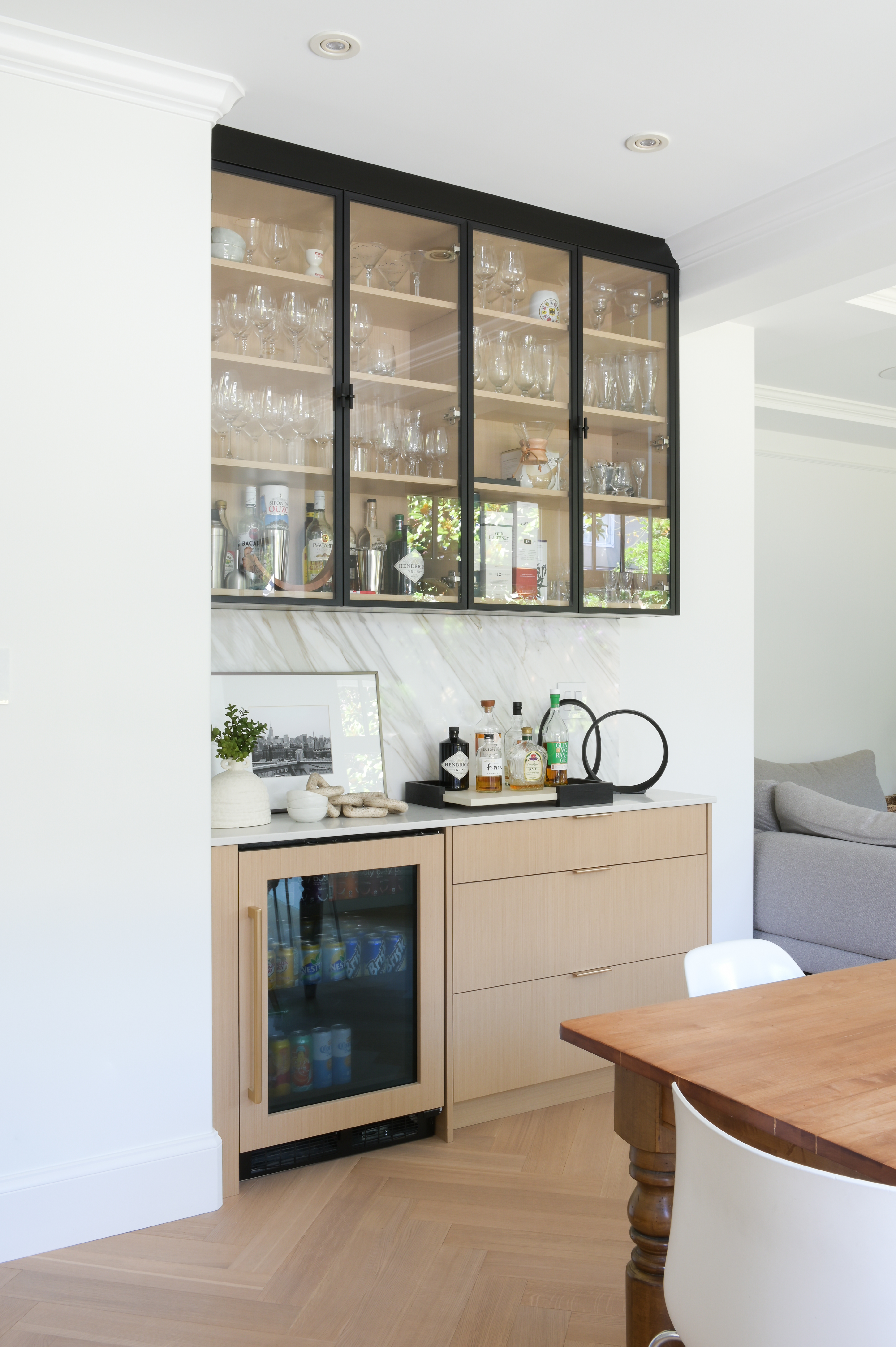
Kitchen cabinets aren't universal in shape and size: Some are tall, some are deep, and some have angular ceilings. Therefore, what works in one person's lower cabinet space may not even fit into yours. Kimberly recommends adding a lazy Susan, like the Lazy Susan Turntable Organizer for Cabinet from Amazon, to your low kitchen cabinet to help keep your items organized. "If you prefer not to pull out a bin from a low cabinet, a lazy susan can make each item accessible from the front without having to move the entire collection by simply spinning," says Kimberly. "Just be sure the items are not too tall, or they may fall with momentum."
These pieces of kit are great to keep smaller items such as spices and condiments together which may otherwise get lost at the back of an angled or deep low cabinet, or as a form of pantry organization.
Heather Bifulco of Tidy Style Home, based in Boise ID, says, "I always love a good turntable for things such as oils, vinegars, spreads, jams, and jellies."
6. Add Extra Storage to Your Cabinets
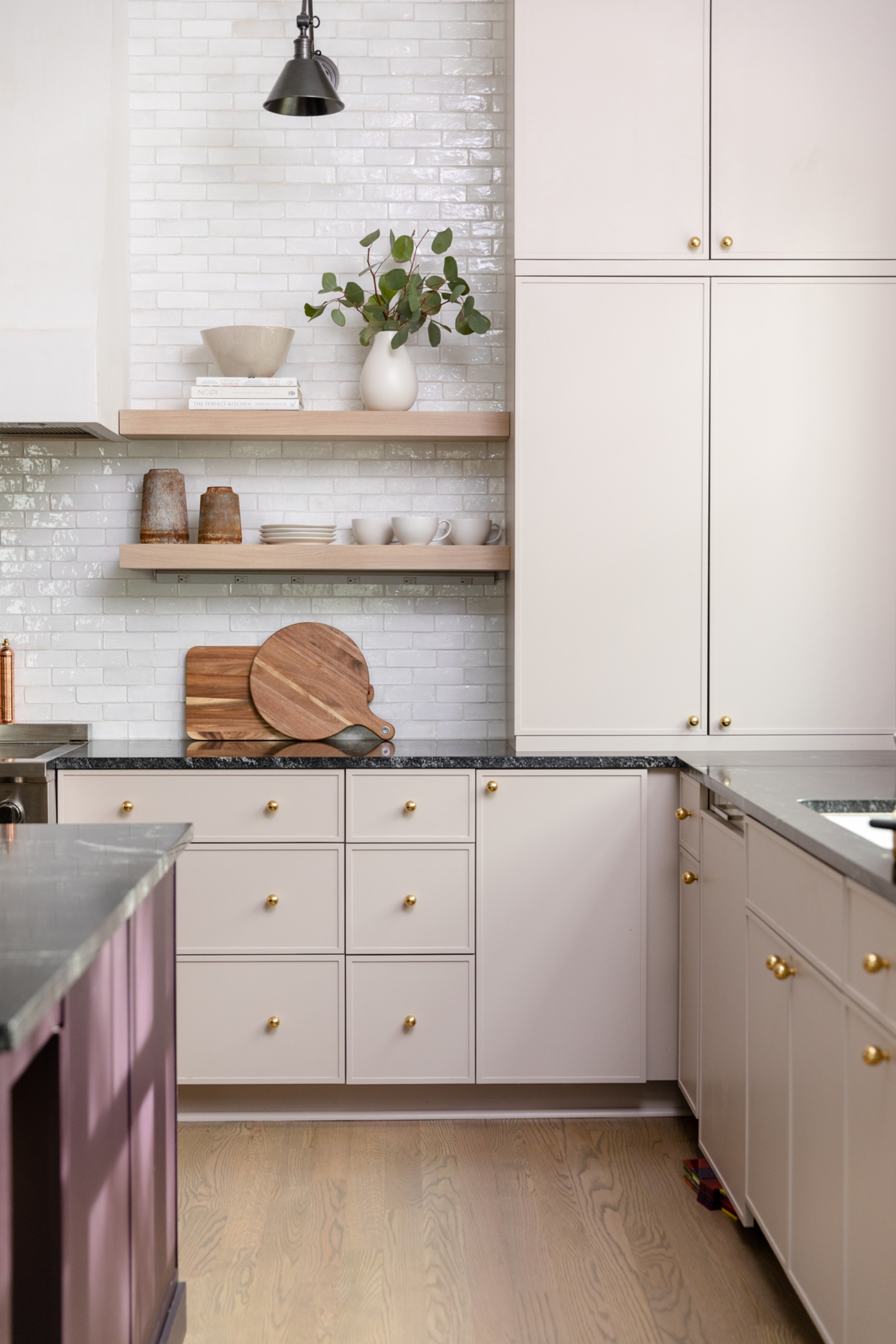
Having great kitchen storage ideas under your belt is essential to keep your lower kitchen cabinets in order and there's truly no better way to make the most out of your deeper shelves than to add in extra wall bins.
Heather says, "The iDesign Affixx Adhesive Organizer Bins from The Container Store are one of our favorite products for organizing and maximizing kitchen cabinet space. You simply stick them to the inside of a cabinet door and instantly create additional storage. The Tidy Style recommends using this product under the kitchen sink for dishwasher pods, sponges, etc., but it can be used elsewhere, too."

When organizing for a client I always have a couple of goals that are paramount.The first goal is to create a sense of calm. I know the project is complete when I can step back and just exhale knowing that the space feels balanced. The second goal is to make the organization easy to maintain. It is important to me that the client is able to keep the space organized with minimal effort.
FAQs
How Often Should I Organize my Kitchen Cabinets?
The small bits of organizing, such as putting your dishes away in their proper home, are practices that can be done daily or even weekly, but in terms of a larger organization system overhaul in the kitchen, Heather Bifulco of Tidy Style Home, based in Boise, ID, recommends looking into everything at least once a year.
"At Tidy Style, we recommend organizing or refreshing your kitchen organization once a year so that you can edit out what is no longer needed and make adjustments as your family grows or lifestyle changes." Heather continues: "When a client comes to us, and they do not know where to start with the home organization, we always recommend starting with the kitchen because it is the hub of the home, and everyone in the home will benefit."
How Do You Decide Where to Put Things in Kitchen Cabinets?
As Ben Soreff, professional organizer and partner of House to Home Organizing, says, for many people, it's most effective to store items where they make sense and where they are most commonly used. However, it's also important to consider how often you'll need to bend to reach items you commonly use if they are stored in a low-down cabinet.
"When thinking through your plan for the kitchen, keep what is used or accessed the most top of mind and easy to access by placing where you don't have to bend or reach if possible," says Heather. "Think zones! Keep all like with like. For example, a baking zone, meal prep zone, lunch packing zone, etc."
Zoning your kitchen in this way will cultivate an environment of harmony and practicality.
Lower kitchen cabinets do not need to be a space of clutter and disorganization anymore. These smart expert tips will certainly bring your modern kitchen ideas to life and grant you a tidy and much more elevated space.
So give these tips a go, and we promise your kitchen will look better than ever — even in those hidden spots.

Ciéra is a writer and regional laureate with particular passions for art, design, philosophy and poetry. As well as contributing to Livingetc, she's an Editorial Assistant for Design Anthology UK and a contributing writer for Homes & Gardens and Apartment Therapy. Previous commendations of hers include being Highly Commended by The Royal Society of Literature and receiving a prestigious MA Magazine Journalism scholarship to City, University of London.